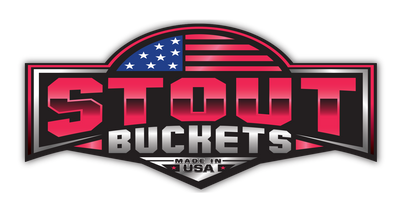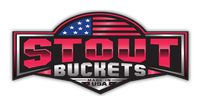How To Extend the Life of Skid Steer Pallet Forks

When your skid steer is equipped with a sturdy pallet fork attachment, it can move and lift heavy loads with ease. But like any piece of equipment, improper use or lack of maintenance can lead to wear and tear.
If you’re wondering how to extend the life of skid steer pallet forks, the key lies in responsible operation and regular care. By following these best practices, you can maximize the efficiency of your attachment and avoid premature replacement costs.
Operate the Equipment Properly
The way you use your pallet forks plays a significant role in ensuring they remain in good condition for years. Misuse can cause unnecessary strain on the attachment, leading to damage and early failure.
Stick to Its Intended Purpose
Skid steer pallet forks are meant to lift, move, and transport pallets or bulk materials. They can't handle tasks such as digging or prying, which are better suited for bucket attachments.
Using pallet forks for jobs they aren’t designed to perform can warp the forks, weaken the frame, and make them unsafe for future use. Stick to their intended purpose to keep your attachments functioning reliably.
Adhere to Weight Limits
Overloading puts immense stress on the forks and the skid steer itself, potentially bending the tines or damaging the frame. Check the manufacturer’s guidelines for the weight limits of your specific pallet fork, and ensure loads remain well within those limits to prevent unnecessary wear.
Balance the Load
Unevenly distributed loads can destabilize your skid steer and strain the pallet forks. Before lifting any material, make sure the weight is evenly distributed across the tines.
When transporting, keep the load low to the ground to maintain balance and minimize the risk of tipping. Balanced loads not only prolong the life of your attachment but also enhance safety during operation.
Drive Carefully
Speeding or abrupt movements while carrying a load can damage both the vehicle and the attachment. Drive carefully, especially on uneven terrain, to avoid jarring impacts that could loosen the forks or crack the frame. Consistent, smooth operation not only protects your attachment but also ensures safer working conditions.
Keep the Attachment Clean

Proper cleaning is another essential part of how to extend the life of skid steer pallet forks. Dirt, grease, and other debris can accumulate over time, leading to corrosion and reduced performance.
After each use, start by removing any large debris or dirt clumps using a stiff-bristle brush or a scraper. Next, rinse the forks with a hose or pressure washer to clear away smaller particles and any remaining grime. Pay close attention to the joints and crevices where buildup is more likely to occur.
Once clean, dry the attachment thoroughly with a clean cloth, or allow it to air dry to prevent moisture from causing rust.
Lubricate Moving Parts
Over time, hinges, pivots, and locking mechanisms can wear down due to friction and lack of maintenance. By regularly applying grease or an appropriate lubricant to these components, you can reduce friction, prevent premature wear, and ensure smooth operation.
Proper lubrication also acts as a barrier against rust and corrosion, which can damage your equipment over time. Taking a few extra minutes to lubricate moving parts not only improves performance but also extends the lifespan of your skid steer fork attachment, saving you time and money in the long run.
Store It in a Safe Place
Proper storage is essential to maintaining the quality and durability of your skid steer pallet forks. Exposure to rain, snow, or extreme temperatures can cause rust to form and weaken the structural integrity of the forks over time. To ensure they remain in excellent condition and last for years to come, always take the necessary steps to store them correctly when not in use.
Keep It Dry
Moisture is one of the leading causes of rust and corrosion, which can damage your skid steer pallet forks and reduce their lifespan. To prevent this, always store them in a dry, sheltered area, such as a garage, warehouse, or storage shed, where they’re protected from rain and humidity.
If indoor storage isn’t an option, take additional steps to protect them outside by using a pallet, blocks, or similar materials to elevate the forks off the ground. This helps prevent direct contact with pooling water, mud, or damp surfaces, which can accelerate rusting.
Use Protective Covers
For additional protection, consider investing in high-quality protective covers specifically designed for heavy equipment. These covers act as a barrier against rain, snow, and UV rays, all of which can negatively impact the metal over time.
Rain and snow promote rust formation, while prolonged exposure to sunlight and UV rays can lead to surface degradation and wear. A durable, weather-resistant cover provides an extra layer of defense, ensuring your pallet forks remain in top condition even when stored outdoors.
Conduct Regular Inspections and Repair Promptly
By thoroughly checking your pallet forks after each use, you can ensure their structural integrity, extend their lifespan, and reduce potential safety risks. Regular maintenance not only saves money but also ensures smoother operations.
Fix Cracks
Small cracks can severely weaken your pallet forks, especially when handling heavy loads, and may lead to dangerous equipment failure. If you spot any cracks, stop using the forks immediately, and take action to repair or replace the damaged parts to maintain safety and performance.
Tighten Loose Forks or the Frame
Inspect the connection points between the forks and the skid steer for signs of looseness or damage. This can compromise the stability of your equipment, creating significant safety hazards during operation. Tighten all bolts, screws, or hardware as needed, and address any misalignment or wear to prevent further issues down the line.
Take Note of Uneven Lifting
Uneven lifting could point to wear, damage, or misalignment in the frame or other critical components. When a skid steer fork attachment lifts unevenly, this puts additional strain on the equipment, potentially leading to more extensive damage if left unresolved.
Check for Rust

Corrosion is a common issue that can quickly weaken the metal structure of your pallet forks if not properly managed. During every inspection, check for signs of rust on the tines, frame, and connection points. Remove any rust you find using rust remover or a steel brush, and then apply a protective coating to prevent further corrosion.
Replace When Needed
Even with proper care, your pallet forks will eventually reach the end of their usable life. If you spot extensive cracks, severe rust, or damage beyond repair, it’s safer to replace the attachment than to risk equipment failure.
At Stout Buckets, we take pride in offering high-quality skid steer attachments. Our products are built to last, ensuring you get the durability and reliability your operations demand. When it's time to replace your pallet fork attachments, we've got what you need.


